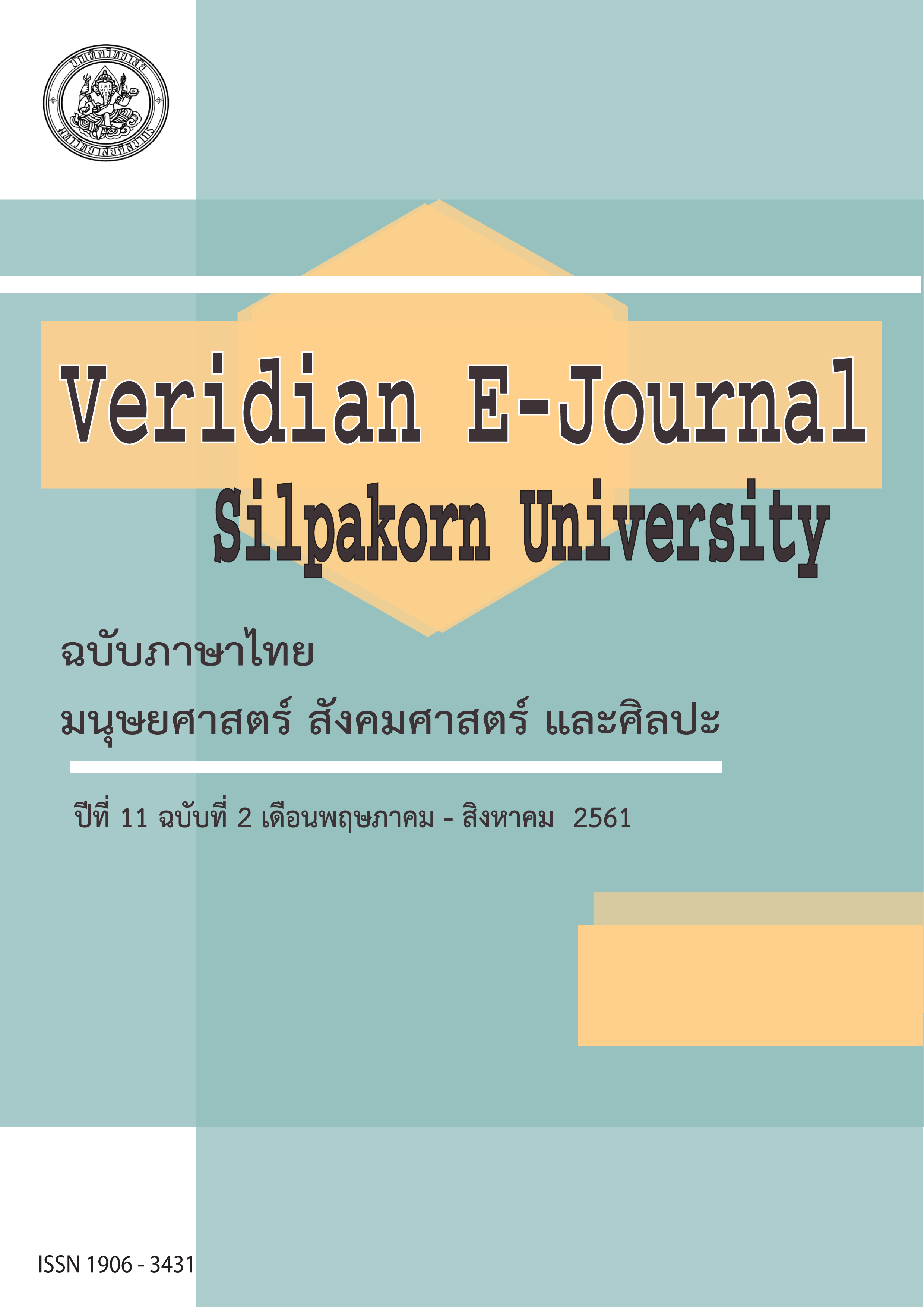แนวทางในการฟื้นฟูเคหะชุมชนเก่า: กรณีศึกษาเคหะชุมชนรามอินทรา (An Approach to Matured Housing Regeneration: A Case Study of Ramindra Housing Community)
Main Article Content
Abstract
บทความนี้มีวัตถุประสงค์เพื่อเผยแพร่ผลงานวิจัยเกี่ยวกับการจัดทำโครงการฟื้นฟูเคหะชุมชนยุคเริ่มแรก ซึ่งการเคหะแห่งชาติเป็นผู้สนับสนุนงบประมาณการวิจัยได้ก่อสร้างเมื่อ 40 กว่าปีที่แล้ว เนื่องจากในปัจจุบัน เคหะชุมชนดังกล่าวมีสภาพชำรุดทรุดโทรมและตกอยู่ในสภาพแวดล้อมที่เสี่ยงต่อสุขอนามัยของผู้อยู่อาศัย อีกทั้งการพัฒนาเมืองโดยรอบได้เปลี่ยนแปลงไปอย่างรวดเร็วกลายเป็นศูนย์ชุมชนที่มีการใช้ที่ดินโดยรอบที่หลากหลายและหนาแน่น กรณีศึกษาเคหะชุมชนรามอินทราจึงเป็นเป้าหมายของการฟื้นฟูเพื่อยกระดับคุณภาพชีวิตของชุมชนและศักยภาพของทำเลที่ตั้งบนถนนรามอินทราซึ่งกำลังจะมีรถไฟฟ้าขนส่งมวลชนเร่งด่วนสายสีชมพูผ่าน
โครงการนี้เป็นงานวิจัยเชิงปฏิบัติการที่แสวงหาความต้องการที่แท้จริงของชุมชนซึ่งนำไปสู่การจัดทำแผนแม่บทเพื่อฟื้นฟูชุมชนนี้ในอนาคตโดยช่วยลดกระแสการคัดค้าน จึงจำเป็นต้องพึ่งพาการดำเนินงานที่เปิดให้ชุมชนมีส่วนร่วมในทุก ๆ ขั้นตอนและเพื่อสร้างความสัมพันธ์ที่ดีระหว่างภาคีที่เกี่ยวข้อง โดยเฉพาะผู้แทนชุมชนกับผู้แทนการเคหะแห่งชาติ ด้วยเหตุนี้ กรอบทฤษฎี/แนวความคิด และกรณีศึกษาส่วนใหญ่จึงเน้นไปในด้านการประยุกต์ใช้กระบวนการสร้างความมีส่วนร่วมของชุมชนที่มีรายได้ระดับล่าง
จากการลงพื้นที่ดำเนินการ คณะผู้วิจัยพบว่าการพบปะเพื่อสร้างความไว้เนื้อเชื่อใจและความร่วมมืออย่างจริงจังจากชุมชนนั้นจำเป็นต้องกระทำหลาย ๆ ครั้ง มากกว่าที่ได้วางแผนงานตั้งแต่แรก จึงสามารถบรรลุเป้าหมายได้ภายในกำหนดเวลาเพียงห้าเดือน ซึ่งนอกเหนือจากการประชุมระดมความคิดเห็น การอบรม สัมมนา การศึกษาดูงาน ฯลฯ แล้ว ยังทำการสัมภาษณ์และจัดทำแบบสอบถามด้วย ซึ่งเทคนิคที่ใช้ได้ผลมากที่สุดในการสร้างความมีส่วนร่วมของชุมชนคือ Photo Talk และการจัดตั้ง Line Group ซึ่งเป็นเทคโนโลยีสารสนเทศที่ได้รับความนิยมสูงสุดในปัจจุบัน สำหรับขั้นตอนในการจัดทำแผนแม่บทร่วมกับชุมชนนั้น พบว่าเทคนิคการสร้างหุ่นจำลองอาคาร ได้กลายเป็นเครื่องมือที่สื่อความเข้าใจและความต้องการของชุมชนได้อย่างมีประสิทธิภาพที่สุด
ผลจากการวิจัยทำให้ทราบว่าชุมชนส่วนใหญ่ต้องการฟื้นฟูสภาพอาคารและสภาพแวดล้อมเดิมให้ดีขึ้น โดยเฉพาะระบบสาธารณูปโภคและสิ่งอำนวยความสะดวกต่าง ๆ เพื่อให้เกิดความมั่นคงปลอดภัย ความสะอาดและความมีระเบียบ รวมทั้งเพิ่มกิจกรรมทางสังคมและรายได้โดยไม่ต้องรื้อถอนอาคารเดิม กระนั้นก็ตาม หากจำเป็นต้องรื้อถอนเพื่อสร้างอาคารใหม่ ก็ขอให้เป็นอาคารสูงไม่เกินแปดชั้นเพราะไม่ต้องการอยู่อาศัยในอาคารที่สูงมาก ๆ และที่สำคัญที่สุดคือการเคหะแห่งชาติต้องมีความชัดเจนว่าผู้อยู่อาศัยผู้ได้รับผลกระทบจะต้องมีที่อยู่อาศัยในระหว่างการฟื้นฟูและพวกเขาจะสามารถแบกรับภาระค่าใช้จ่ายอันเกิดจากโครงการฟื้นฟูเคหะชุมชนแห่งนี้ในอนาคตในสัดส่วนที่เหมาะสมและในอัตราที่ยอมรับได้
The main objective of this article is to disseminate an action research findings with regard to formulating a proper regeneration scheme for one of early housing communities created some forty years ago by the National Housing Authority (NHA), the funding supporter of the research, on Ramindra road. Due to the present physically, socially and economically deteriorating conditions of the said aged community now threatening the healthiness of its dwellers, the Ramindra Housing Community has thus become a target of regeneration program aimed to upgrade its quality of life and growing property value after becoming a sub-center of Bangkok Metropolis surrounded by high-density land uses and vibrant urban activities where a soon-coming rapid transit line has been commissioned to pass its golden property.
As an action research seeking to discover the real needs and attitudes of the community dwellers to pave way for a smooth regeneration program implementation in the future, the research process therefore lies heavily on the application of community participation methods determined to institute mutual understanding and liaison among the key stakeholders, especially between the representatives of NHA and the community itself.
After the groundbreaking session, it was found that more often meetings with the community than earlier scheduled became necessity in order to create trust and enthusiastic cooperation. The research methods employed include brainstorming meetings, trainings, seminars, study visits to best-practice projects, interviews, questionnaires, as well as focus group consultations and discussions. It was also found that the most efficient and popular techniques were ‘Photo Talk’ and ‘Line Group’. During the master planning stage, ‘Small-scale Mass Model’ was appreciated and proved to be the most fruitful tool.
The research findings reveal that in order to restore safety, security, healthiness and order, most community dwellers need to improve their physical environment, especially the dilapidated buildings, water supply and sewer systems, as well as social organization activities and welfare services without demolishing the existing structures. However, in case of necessity to replace the old buildings, maximal eight-storey residential buildings are suggested because living in high-rise units are hostile to them. Nevertheless, the most crucial issue has focused on ‘clarity of NHA attitude’ towards ‘affordable’ expenses incurred. It is indeed the real threat to the community dwellers. In addition, whether or not NHA will provide transitional accommodations for those affected during the renewal construction period is a secondary question posed by the community representatives.

